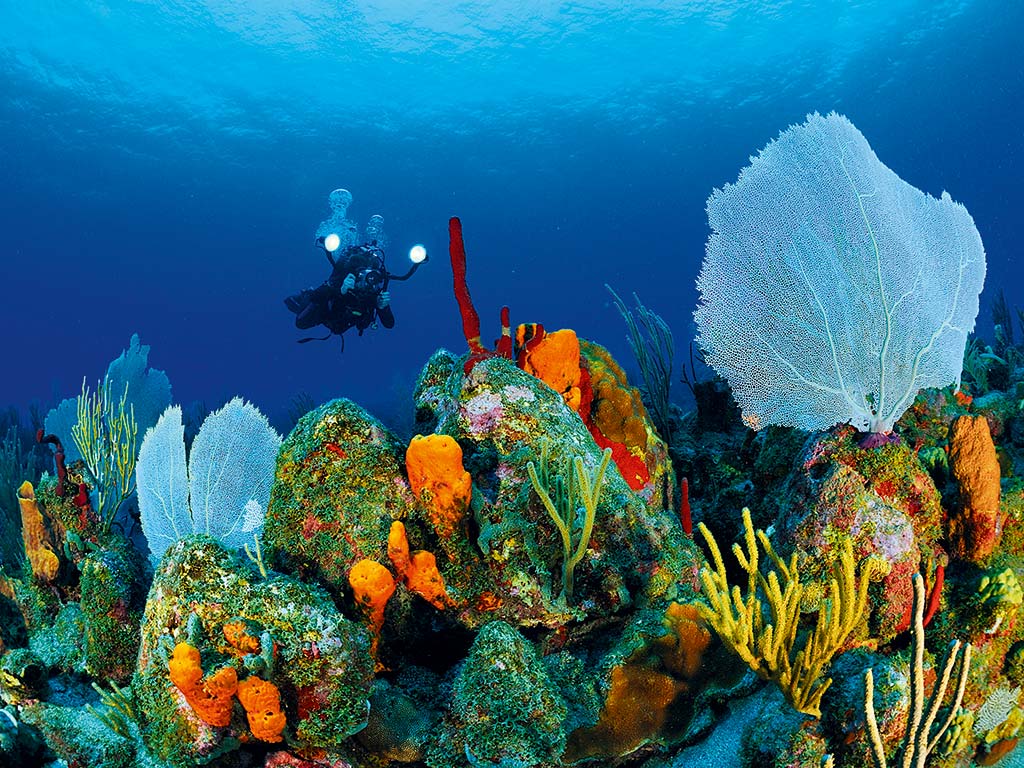Nestled in the northeastern Caribbean, about 150 miles east of Puerto Rico and just 18 miles south of St Maarten, is a tiny island of less than 12 square miles, and fewer than four thousand people, that delivers big thrills.
The Dutch Caribbean island of St Eustatius – from now on let’s call it Statia, because that’s what everyone calls it anyway – is an attractive and unique mix of serenity, immaculate diving, peace, history, culture and pleasurable bliss.
Cultural diversity
This saddle-shaped island, with a 602m-high dormant volcano known as the Quill protruding from its bosom, appeals to holidaymakers in many different ways. The Europeans must have known there was something special about Statia the moment it was sighted by Christopher Columbus in 1493. This special aura resulted in Statia being one of the most highly prized possessions in the Caribbean – the tiny island changing hands among colonial masters a staggering 22 times. This undoubtedly contributed to its rich and diverse culture.
Ships came to ‘The Golden Rock’ to trade in a variety of cargo. During the eighteenth century this island’s strategic location in the Caribbean Sea made it a crucial prize for France, Britain, and The Netherlands, and an especially valuable friend of the thirteen British Colonies of North America, before they even achieved independence. That trading partnership led to the famous ‘first salute’ which established St Eustatius as the first foreign country to formally acknowledge the independence of the US in 1776.
Despite its political history, Statia has a distinctively Dutch flavour, with sleepy villages, and is the epitome of the forgotten Caribbean. Three hundred years ago, every buccaneer, every admiral, every pirate knew of the island. Signs of its exotic past can be seen everywhere, from its architecture, to its streets, to its ruins. And these signs are as appealing on land as they are beneath the waters.
“Signs of its exotic past can be seen everywhere”
Diving and destressing
Its underwater beauty is stunning. You don’t have to venture far from shore to spot reef sharks, eagle rays, hawksbill turtles, green turtles and larger fish varieties such as nurse sharks lazing amid coral and sponge-covered walls. If you choose to dive deeper you can relive history through tangled shipwrecks, such as the Charles Brown, which, at 100m long, is one of the longest wrecks in the Caribbean. And, keeping you company as you explore these wrecks are hundreds of schooling snappers, horse eye jack fish and sharks, with large barracudas guarding the upper waters while spotted morays and southern stingrays patrol below.
Statia is a great holiday destination for many other reasons. Every resident swears on the island’s reputation as a crime-free area; locals even leave their cars unlocked. However, Statia is also a rare pedestrian-friendly island. Travel the cobbled main street of the capital during ‘rush hour’ and you’ll never see a traffic jam, and no car goes faster than 30kmph. They can’t and they don’t have to, because life is so calm, so relaxing. Today’s visitor has a hard time believing that this tiny island once had one of the busiest ports in the Caribbean. This clean, unhurried, unspoiled, pristine, practically crime-free, historically and culturally rich bit of heavenly bliss is indeed special. The warm and friendly people you encounter are the icing on the cake.





